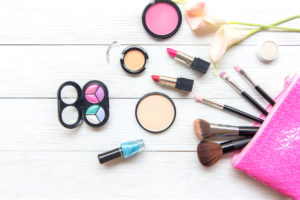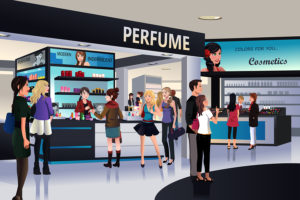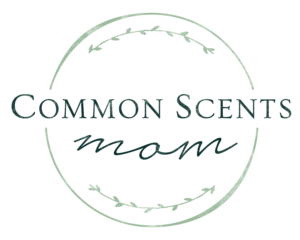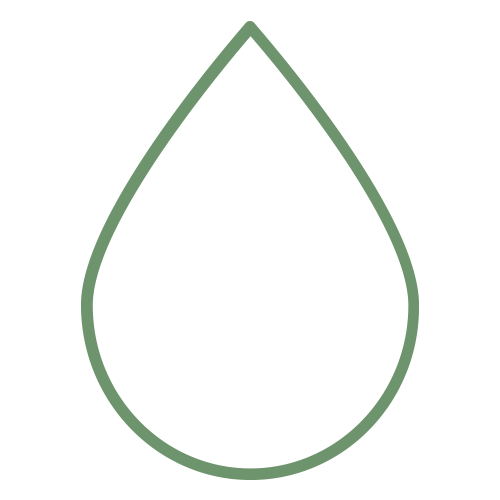Can you imagine soaking a cotton ball in formaldehyde and rubbing it on your face? How about antifreeze? Oh, come on! Let’s add a bit of that to the baby’s bathwater!

It may surprise you to find that your skin is by far the largest organ in your body, and what you put on it affects your mind and body in ways you can’t always see immediately. Many household cleaning and personal care products on the market today contain ingredients that are, or can be, cancer-causing agents (or just plain dangerous).
As we go through our daily routine, many of us are exposing ourselves to more than 200 different chemicals, and often the same dangerous chemicals in multiple products.
Recently, I was in the grocery store and noticed a popular poultry brand labeled their whole chicken as “natural.” There was no indication that the bird was organic, free-range, or hormone and antibiotic-free; but, I wonder how many consumers were fooled by the term “natural.”
 The same is true in personal care products. Since there are no regulations on what is “natural,” it’s easy for companies to abuse this term. Many of these products simply have a higher price tag, but still have the same dangerous ingredients as the products they claim to replace.
The same is true in personal care products. Since there are no regulations on what is “natural,” it’s easy for companies to abuse this term. Many of these products simply have a higher price tag, but still have the same dangerous ingredients as the products they claim to replace.
We need to do our research and know what’s in the products we’re using. Of the hundreds of toxic chemicals used in personal and skin care products, here are a few of the “worst offenders”. If you can learn and memorize these few ingredients, and start reading ingredient labels, you can avoid some of the most serious carcinogenic and hormone-disrupting chemicals.
Alcohol (Isopropyl)
As a petroleum-derived solvent and denaturant, you’ll often see this chemical in the ingredient list of many cosmetics and bath products. It’s also used in antifreeze, as a solvent in shellac, and in low-quality diluted essential oils. According to A Consumer’s Dictionary of Cosmetic Ingredients, ingestion or inhalation of the vapor may cause headaches, flushing, dizziness, mental depression, nausea, vomiting, narcosis, anesthesia, and coma. The fatal ingested dose is just one ounce!
FD & C Color Pigments
Colors that can be used in foods, drugs, and cosmetics are often made from coal tar. Most of us know the health risks associated with food dyes, but what about the dyes we put on our skin?
“Occupational exposure to coal tar or coal-tar pitch is associated with an increased risk of skin cancer. Other types of cancer, including lung, bladder, kidney, and digestive tract cancer, have also been linked to occupational exposure to coal tar and coal-tar pitch.” – cancer.gov
Fragrances
 Many people realize that synthetic fragrances either give them a headache, irritate their skin, or cause an allergic reaction. Most health and beauty products on the market today contain “fragrance.”
Many people realize that synthetic fragrances either give them a headache, irritate their skin, or cause an allergic reaction. Most health and beauty products on the market today contain “fragrance.”
But, these indicate a synthetic chemical that is designed to “copy” a natural scent. And, while the compounds in synthetic fragrances are carcinogenic or otherwise toxic, therapeutic grade essentials oils smell good and they’re good for you!
“Fragrance on a label can indicate the presence of up to 4,000 separate ingredients. Most or all of them are synthetic. Symptoms reported to the FDA have included headaches, dizziness, rashes, skin discoloration, violent coughing and vomiting, and allergic skin irritation. ” (“Home Safe Home”, author Debra Lynn Dadd)
If you’re looking for a more natural perfume that actually smells better than commercial brands, why not make your own? Click Here for some amazing DIY recipes!
Mineral Oil
Did you know that most baby oils contain 100% mineral oil? This ingredient actually coats the skin…imagine wrapping a raw chicken breast in Saran wrap…it’s sealed – nothing in, nothing out! This inhibits the skin’s ability to breathe. As the body’s largest organ of elimination, it’s super important for the skin to be able to naturally purge and release toxins (this is especially true at night while you’re sleeping).
Mineral oil impedes this natural process, allowing toxins to accumulate, which can promote acne and other disorders. It also slows down skin function and normal cell development, resulting in premature aging of the skin. Start checking your labels! You’ll find mineral oils in all sorts of bath and beauty products!
But you won’t find any mineral oil in Young Living’s Seedlings Baby Oil!
Polyethylene Glycol (PEG)
PEG is commonly used in cleansers to dissolve oil and grease (as in caustic oven cleaners), as well as to thicken products. They’re also found in many personal care products. Not only are they potentially carcinogenic, but they strip the skin’s natural moisture factor, leaving the immune system vulnerable.
thicken products. They’re also found in many personal care products. Not only are they potentially carcinogenic, but they strip the skin’s natural moisture factor, leaving the immune system vulnerable.
Propylene Glycol (PG)
PG is the active component in antifreeze. There is no difference between what’s used in industry and what’s used in personal care products. Industry uses it to break down protein and cellular structure (what the skin is made of), yet it is found in most forms of makeup, hair products, lotions, deodorants, mouthwashes, and toothpastes.
Sodium Lauryl Sulfate (SLS) & Sodium Laureth Sulfate (SLES)
These closely related cleansing agents can be found in car wash detergents, industrial cleaners, engine degreasers, and even laundry soaps. But, they are even more widely used as major ingredients in cosmetics, toothpastes, and about 90% of all shampoos and shower products that foam.
According to an American College of Toxicology report, SLS stays in the body for up to five days. Other studies show that SLS easily penetrates the skin and enters and maintains residual levels in the heart, liver, lungs, and brain.
Urea (Imidazolidinyl) & DMDM Hydantoin
These are two common preservatives that release formaldehyde (called “formaldehyde donors”). According to the Mayo Clinic, formaldehyde can irritate the respiratory system, cause skin reactions and trigger heart palpitation. Exposure to formaldehyde may cause joint pain, allergies, depression, headaches, chest pains, ear infections, chronic fatigue, dizziness, and loss of sleep. It can also aggravate coughs and colds and trigger asthma.
Here are several apps you can use to check the ingredients in your household and skincare products:
TRICLOSAN
This is the anti-bacterial compound found in many personal care products, such as hand soaps, dishwashing liquids, and even some toothpastes. They’re added with the intended purpose of reducing or preventing bacterial contamination. But is triclosan safe? Research has shown that it:
But is triclosan safe? Research has shown that it:
- Alters hormone regulation in animals
- Might contribute to the development of antibiotic-resistant germs
- Might be harmful to the immune system
Triclosan, can be absorbed through the skin or mouth and, in a 2008 study, triclosan was found in the urine of nearly 75% of the children and adults tested!
Stored in body fat, triclosan can accumulate to toxic levels, damaging the liver, kidney and lungs and can cause paralysis, sterility, suppression of immune function, brain hemorrhages, decreased fertility and sexual function, heart problems, and coma. (Debra Lynn Dadd. 1990. Non-Toxic Natural and Earthwise. Jeremy P. Tarcher).
And to add insult to injury, according to the FDA, there’s no evidence that antibacterial soaps containing triclosan are more effective than plain old soap and water in preventing illness or certain illnesses.
Boston-based microbiologist Laura McMurray and colleagues at the Tufts University School of Medicine say that:
“Triclosan is capable of forcing the emergence of “superbugs” that it cannot kill. And experiments have shown that it may not be the all-out germ killer scientists once thought it was….” (Maggie Fox. Common Disinfectant Could Breed Superbugs. Health and Science Correspondent).
There is Hope!
Slowly, but surely, more and more manufacturers are getting the message that we consumers want personal care products that aren’t, you know, poisonous. Something that won’t kill us in our sleep.
Thankfully, Young Living has a full line of cleaning and personal care products that contain no toxic chemicals, and that also meet the needs of those of us looking for products that actually promote a healthy lifestyle! Toothpaste, shampoo, conditioner, deodorant, laundry soap, dish soaps, baby products, wipes, veggie wash, skin care, soap, and the list goes on! Products infused with life…essential oils!
Two of my favorite products in our Thieves line are the Thieves Hand Soap and the Thieves Hand Purifier! Neither of which contain Triclosan, by the way! Instead, it’s loaded with powerful essential oils like cinnamon, clove, rosemary, lemon, and eucalyptus!
Needless to say, you have choices! Just take the time to get informed! And let me know if you need a little help!
See Simple Steps to a Toxin Free Home for tips and ideas for getting started with toxin-free cleaning!






This Post Has One Comment
Ethylene glycol (IUPAC name: ethane-1,2-diol) is an organic compound widely used as an automotive antifreeze and a precursor to polymers. In its pure form, it is an odorless, colorless, syrupy, sweet-tasting liquid. Ethylene glycol is toxic, and ingestion can result in death.
Ethylene glycol is not to be confused with diethylene glycol, a heavier ether diol, or with polyethylene glycol, a nontoxic polyether polymer.
Comments are closed.